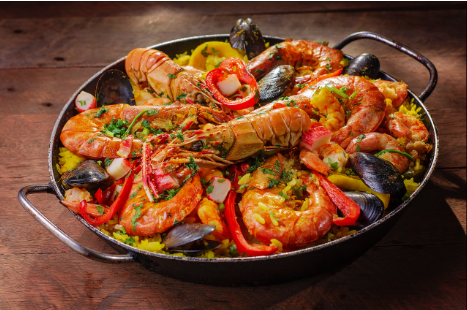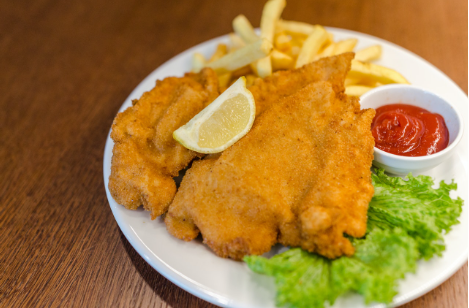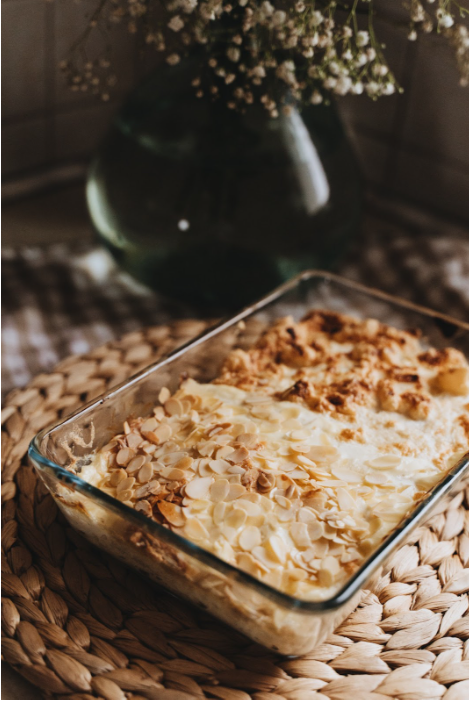European cuisine is a tapestry of flavors, traditions, and culinary heritage, and as a passionate food enthusiast, I find it endlessly fascinating. Each country, each region, and each dish tells a unique story deeply woven into the fabric of European culture.
In this article, we embark on a culinary journey through the annals of history, uncovering the profound histories and cultural significance of five celebrated traditional European dishes. These dishes are more than just food; they are windows into the soul of the nations they represent, offering a taste of their rich history and diverse culture.
France’s Bouillabaisse
Historical Roots:
Bouillabaisse is a dish that never fails to transport me to the picturesque coastline of Provence. Its origin as a humble fisherman’s stew reminds me of the resourcefulness often at the heart of great culinary traditions. Creating a delicious meal from what might otherwise be discarded bycatch speaks to the ingenuity and respect for nature that culinary traditions can embody.
Ingredients and Culinary Preparation:
Bouillabaisse’s fragrant combination of seafood and aromatic herbs has always captured my imagination. It’s a reminder that even the most humble ingredients can result in a unique dish when combined with care and skill. The saffron-infused broth is a masterpiece of flavor, a testament to how French cuisine celebrates the natural bounty of the Mediterranean.
Regional Interpretations and Cultural Significance:
When I think of Bouillabaisse, I think of Marseille, a city with a deep connection to the sea. It’s remarkable how a dish can become a symbol of a place’s identity, reflecting the history and culture of its people. As we explore Bouillabaisse, we are not just uncovering a recipe but unearthing the maritime spirit of Marseille and the Mediterranean.
Spain’s Beloved Paella

Historical Context:
The history of Paella is a testament to the creativity of people who, with limited resources, could create a dish that’s not only delicious but also a vibrant symbol of Spanish culture. This reminds me of the resourcefulness and inventiveness that have shaped culinary traditions throughout history.
Ingredients and Cooking Technique:
Paella’s combination of saffron-infused rice, meats, seafood, and vegetables is a sensory delight. It’s a reminder that food is not just about sustenance but a celebration of life. The communal cooking process in a wide, shallow pan is a beautiful metaphor for how Spaniards come together to savor life’s moments.
Cultural Importance and Regional Variance:
The diversity of Paella across Spain is a testament to the richness of Spanish culture. It’s fascinating how one dish can adapt and evolve to take on local flavors and customs. It tells me that food is a living tradition, always evolving yet rooted in the past.
Austria’s Timeless Wiener Schnitzel

Historical Unfolding:
Wiener Schnitzel’s history, with its connections to the Habsburg Empire, is a reminder of how the ebb and flow of history shapes culinary traditions. It’s incredible how a dish can encapsulate the influences of various cultures, reflecting a rich tapestry of culinary history.
Ingredients and Culinary Craftsmanship:
The simplicity of Wiener Schnitzel is a lesson in how less can often be more in the world of cuisine. It’s a dish that doesn’t rely on complex ingredients or elaborate techniques but excels in simplicity and execution. It’s a reminder that the most exquisite experiences sometimes come from the most straightforward recipes.
Austrian Culinary Identity:
How Wiener Schnitzel unites people across social boundaries in Austria speaks to the unifying power of food. It’s more than just a dish; it’s a symbol of national identity and pride. It tells me that food can be a powerful force for bringing people together and celebrating their shared heritage.
Greece’s Ancient Moussaka

Historical Evolution:
Moussaka’s journey through time, influenced by ancient Greek, Ottoman, and Mediterranean traditions, is a testament to the ever-changing nature of culinary culture. It’s fascinating to see how a dish can evolve and adapt over centuries yet retain its essential character.
If you’re as intrigued by the rich tapestry of Greek cuisine as I am, you might also enjoy exploring the flavors of Paliria Greek dolmas. These delicate stuffed grape leaves, known for their exquisite combination of rice, herbs, and fragrant olive oil, complement the world of Greek culinary heritage. You can learn more about these delightful bites by visiting the Paliria website above.
Ingredients and Culinary Artistry:
Moussaka’s layers of eggplant, meat, and béchamel are a sensory delight. They remind me how food can be a work of art, a canvas upon which different flavors and textures come together perfectly. It’s a celebration of Greece’s diverse culinary heritage.
Cultural and Symbolic Significance:
Moussaka’s role as a communal dish in Greece is a beautiful reminder of food’s power to unite people. It’s a dish that symbolizes not just Greek cuisine but also the warmth and hospitality of the Greek people.
United Kingdom’s Comforting Shepherd’s Pie
Historical Context:
Shepherd’s Pie’s historical context as a thrifty, leftover-based dish reflects the British spirit of resilience and pragmatism. It’s a reminder that culinary traditions often arise from the need to make the most of what’s available.
Ingredients and Culinary Technique:
The combination of minced meat and creamy mashed potatoes in Shepherd’s Pie epitomizes comfort food. It’s a dish that speaks to the soul, providing warmth and familiarity. It reminds me of the way food can evoke powerful emotions and memories.
Shepherd’s Pie in British Culture:
Shepherd’s Pie’s place in British culture is a testament to how certain dishes become intertwined with a nation’s identity. It’s not just a meal; it’s a symbol of home and life’s simple pleasures. It tells me that food can be a powerful source of nostalgia and comfort.
Conclusion
As we conclude our culinary journey, I’m reminded of European cuisine’s immense depth and diversity. Each dish has a story to tell, not just about the ingredients and techniques but about the people, places, and cultures that created them. They are a testament to the enduring appeal of European cuisine, which continues to captivate and inspire. I encourage you to embark on your culinary adventures, exploring these dishes and the stories they hold and, perhaps, creating your culinary traditions along the way.


